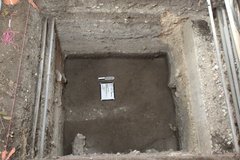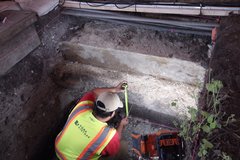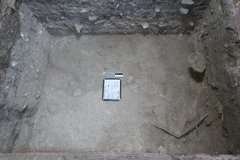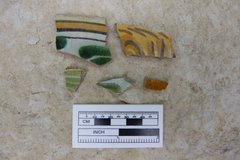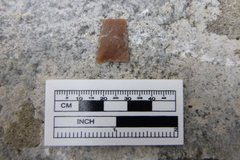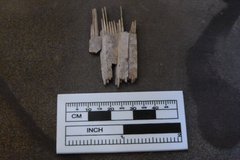Archaeologists continue to work in EUs 1, 3, and 5, as well as processing artifacts in the lab.
In EU-1 archaeologists reached a depth of approximately 130 cm below datum. Soils are transitioning to a clay-rich deposit and artifacts are less frequent than previous levels.
In EU-3 archaeologists completed final documentation of the unit. Detailed soil profiles were created for all four walls of the unit. A final plan view map was also produced. This unit will now sit idle until the remaining depth is mechanically excavated. Archaeologists stopped excavation at 150 cm below surface because any deeper would exceed the OSHA-determined safe depth before shoring is required.
Excavations continued in EU-5. Archaeologists have reached a depth of approximately 110 cm below surface. A compacted lime-surface, or floor, was encountered at approximately 117 cm below surface. This surface extends evenly across most of the western half of the unit, but dips down heading towards the east. The portion of the surface at the lower elevation undulates and is not as nicely preserved as the western half. The surface abruptly stops about 10 cm from the eastern unit wall. Along the eastern unit wall there is a dark silty clay that resembles the sterile matrix encountered at the base of EU-3.

